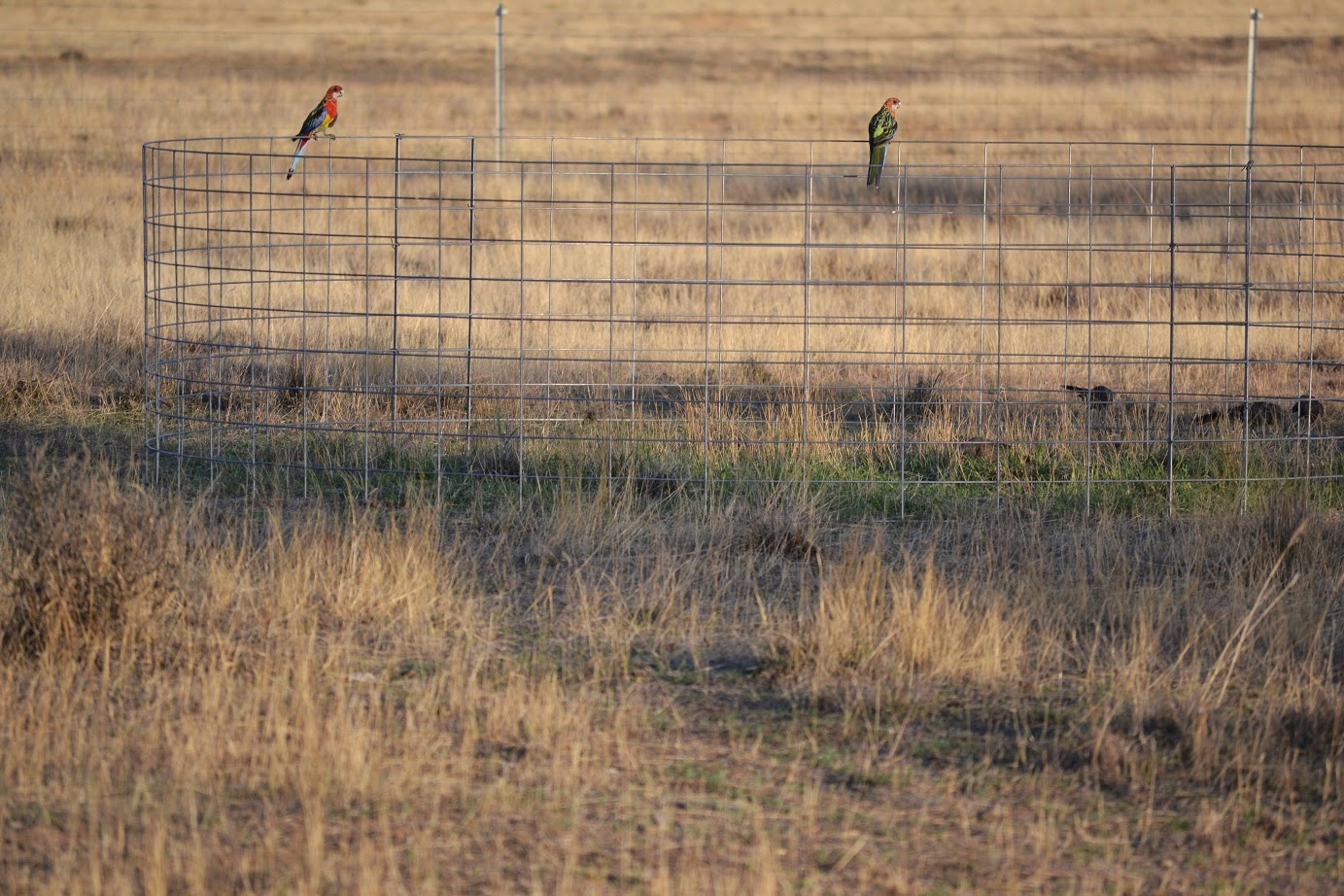We thought we’d share the accompanying photo for those not
familiar with the tagging process of cattle in Australia. The high-tech white
tag on the left is for compliance with the National Livestock Identification
System (NLIS) requirements and the tag on the left is for the low-tech Ochre
Arch cattle management system. The white tags are designed for lifetime animal
traceability.
The white tags have two numbers associated with them. An
internal Radio Frequency Identification Device (RFID) number which is 16 characters
long (15 numbers and a space between the 3rd and 4th) and
is read electronically via a scanning device affectionately known as a ‘wand’;
and an external visual National Livestock Identification System identification number.
The NLIS ID indicates the property where
the animal was identified and whether that was the property of birth or not.
The first 8 characters of the 16 digit NLIS ID number is the Property
Identification Code (PIC) of the property it was ordered for and if the device
is white in colour it means that the animal was born on that property. Pink
NLIS ID tags are for use with cattle not born on the property.
The RFID can only be read electronically. The NLIS ID cannot
be read electronically. There is no logical correlation between the RFID ID
number and the NLIS ID number. The two numbers are supplied simultaneously by
the device manufacturer to the NLIS administrators and it is via that database
that ‘linking’ is recorded.
On Ochre Arch we don’t have the volume of cattle to warrant
the purchase of a ‘wand’ and use of associated software to use the NLIS tags
for cattle management. It is really only practical for us to see and read the
NLIS ID number when the animal is in the cattle crush. Of course we do install
the NLIS ID tags as this is a prerequisite for any process that results in
cattle moving off our farm. To date our cattle have had only two destinations –
the Forbes Central Livestock Exchange for sale at the weekly ‘fat’ cattle
market and direct to the Cowra meat processing plant in connection with our
direct sales of beef as quarter packs. In both cases the NLIS database is
advised by third parties of the animal transfers – by the stock agent and by
the meat processor.
When we order and purchase NLIS ID tags the manufacturer
sends details of the tag and their numbers to the NLIS database and the tags
are recorded against our PIC in the database. We also have tag numbers move
onto our database when we acquire stock. To this point we have only acquired
stock from two sources – purchase of our cows and bull from a neighbour; and
purchase of steers at store sales held at Forbes.
We have installed pre-printed yellow management tags on all
of our cattle and keep manual records. We initially purchased ‘blank’ yellow
management tags but found that the hand-written numbers we put on them using
permanent marker pens faded making them pretty useless. The tags enable us to
do a range of tasks such as:
- Matching’ cows with their calves
- Calculating calf ages in the context of doing visual growth rate assessments
- Off the above … using the age to estimate when to sell calves to optimise the financial return. All things being equal buyers tend to pay a higher price per kg the younger the animal is.
- Seeing how many cattle we’ve sold over time and have on hand
- Identifying cows that may have not fallen pregnant and need to be culled.
- Problem solving when and if the NLIS tag gets lost.
The last point was particularly relevant with stock we sent
to market last Sunday for sale on Monday. After the sale we received an email
warning notification from the NLIS that one of the steers recorded against of
National Vendor Declaration had a NLIS tag with a number suggesting it had come
from another property. After much investigation by us and our agent it was
discovered that the steer had lost its National Livestock Identification System
(NLIS) ear tag in transit and due to unusual circumstances a replacement tag
from another property was installed in error at the yards. This event has been
the catalyst for us doing the research behind this article and also reconciling
and amending the records in the NLIS database for our farm. The NLIS database is
not particularly friendly to use!















